In our recent semi-annual pilgrimage to Big Bend National Park, we had to find out if there’s a way to get away from camping crowds in the park.
What did we learn?
Don’t even try to take your rig out there.
Stay away! It’s dangerous!
You don’t want to try it!
Ha! Hah! That’s a joke. We want to keep these campsites all to ourselves!
But we like you, so we’ll tell you how to camp in the outback in Big Bend.
Back Country Camping for RVs at Big Bend National Park
We learned the scoop about RV-friendly sites in Big Bend’s back country from a kind visitor center employee who seemed oblivious to the usual approach that park rangers gave to us in years past: they discouraged us by saying things like “oh those are bad roads, you don’t want to take your RV there.”
Park rangers discourage RV back country camping in Big Bend for reasons like “protecting aesthetics” and preventing unsightly RVs from disturbing the natural landscape. However, it’s not illegal to take your RV to a select few choice spots, if it fits.
BUT before you head on over, remember that strict backcountry rules do apply: you can’t run generators in the backcountry. If you’re thinking that you can get away with it in remote spots like this, think again: every day the park sends rangers out in search of illegal generator use, off-leash dogs, etc. and if you get caught, you may be banned for life. So if you can’t live without your genny, don’t bother.
General Backcountry Information for RVs
First, be prepared to pay a $20 park entry fee that’s good for 14 days (tip: enter the park on a “free day” like we did, and your entry fee is waived!).
Next, head to a visitor center 24 hours before your intended arrival into the backcountry, since that’s the earliest you can reserve any back country site and you can only reserve at the park. If you arrive during peak season, you’ll be competing with numerous other people for spots, so wake up early and go to the Rio Grande Visitor Center which opens at 8 am, one hour earlier than the main Panther Junction Visitor Center.
Reserving a backcountry campsite costs just $10 for two weeks (which is the entire length of time anyone can stay in the park during one season). What a deal!
The park staff can explain backcountry rules and how to get into the backcountry camping system. It’s complicated; be prepare to move a few times if you go during peak seasons.
RV Campsite Descriptions
On a sunny morning we left the trailer at the Rio Grande Village campground and set off in our Dodge in search of a backcountry campsite with a decent entry road and good turnaround space.
The best RV-friendly back country sites for a rig our size (a 24′ long fifth wheel and a 40′ overall length with the truck) are:
- Hannold Draw
- K-Bar
- Grapevine Hills Road Campsite 1
- Nugent Mountain / Pine Canyon 1 or 2
- Croton Spring
Most of these campsites are located on dirt roads that spur off the main park road, Highway 118. Some are closer to the highway than others. Hannold Draw is the only one located on Highway 385, which runs north/south from Persimmon Gap to the Panther Junction Visitor Center.
Download this detailed park zones map
and illustrated backcountry zones drawing to find
RV-Friendly Campsites in the Big Bend Backcountry
With the exception of Nugent Mountain / Pine Canyon, as long as you have a high-clearance 4-wheel drive pickup and you’re not too concerned about a bouncy ride, access to the campsites is decent. However, any amount of rain can easily wash out access, so do a recon without the RV.
Hannold Draw
This campsite is the only one that can be reserved in advance by calling the park visitor center. It’s meant to hold horse trailers, so equestrians are given preference. Unless you’re bringing Trigger along, you won’t get in during peak times. Otherwise it apparently has great access and lots of space for RVs. We didn’t check it out since it was booked the entire two weeks of our visit.
K-Bar 2
K-Bar has two sites, one is a tiny pull-through site located on a small, bumpy dirt road close to the Panther Junction Visitor Center.
This is a little pull-through and OK for tents, vans or truck campers, while the second RV-friendly site is about 1/4 mile away at the end of the road. It’s a fabulous spot with great views of the park, and with a little maneuvering even a 30′ RV might fit inside. The problem with this one is that because it’s at the end of the road, you’ll see lots of campsite-scoping idiots like us, who are forced to turn around in your tiny camping area. I would only go here during off-peak times.
Grapevine Hills Road Campsite 1
Grapevine Hills is relatively close to the main park road but has the best access for larger RVs, even ones without four wheel drive. It has massive views, and is so big that Sean and Louise fit the Odyssey in there! As a result this location is frequently booked since every RVer who knows about camping in the Big Bend outback wants to get in. Try this one during the off-season.
Nugent Mountain / Pine Canyon 1 or 2
The road to Nugent Mountain starts out good enough and has the best southern views of Big Bend’s mountains, but rapidly deteriorates into severe gully dips and steep hill climbs. Bringing our towable rig here would’ve been a bad idea, but a 4WD van or truck bed camper can definitely do it. This road gets a little busy with off-roaders.
Croton Spring
Out of all campsites, this was our last choice because it’s a dual-site and we knew we’d be sharing this with someone else. While it’s not as large as Grapevine Hills Road, the sites aren’t as close in proximity as you would be if you were crammed into a developed park campground.
But, since it was the only campsite open just a week prior to spring break madness, we nabbed it for nine nights. The nicest part about Croton Springs is that there’s a fantastic, albeit overgrown, trail that takes you in a northern direction through some spectacular scenery.
The access road to Croton Spring is good enough for a RV with four wheel drive, however, the problem is that if it rains, you’re going to be stuck for a while. During our last night it rained, and we knew that if any more water fell, we might get stuck. Later, a park volunteer told us he’s seen that happen; the road is one of the worst in the park when rain happens and everything turns to a slick mud.
Paint Gap
We didn’t explore this campsite, but locals later told us this is RV-friendly for a small rig. If you go there, let us know what you find!
The Pros and Cons of RV Backcountry Camping in Big Bend
The Cons:
No generator use. When we decided to try Big Bend backcountry camping in our RV, we knew that the no-generator rule would be a big issue if the weather turned sour. After all, we earn our living online and our satellite dish sucks up a lot of juice. Without a generator to power us on cloudy days, we knew we’d be hosed.
Well, the weather did turn cloudy, and it did rain. And although we were very tempted to run our generator on cloudy days, or at night, we were Good Sams and just worked less. Doing so is a BIG deal for us: we are work-a-holics, and cutting back on work time was difficult.
However, there’s something about the ear-splitting silence of this country that compelled us to do our part to preserve a precious and rare resource: silence.
We left a few days early, as the weather forecast called for continuous clouds. Still, we’re glad we stuck it out here for five nights, far longer than we thought we’d last without a generator. We had one neighbor for a couple of nights and they were pretty quiet.
The Pros
The silence. Even if you’re not too far from the road, you still feel very isolated in the Big Bend backcountry.
The cost: At less than $1 a day for 14 days straight, camping doesn’t get any cheaper than this in Big Bend country.
The scenery: You’ll get a real sense of the landscape as old-timers saw it. These campsites are primitive and the park does an excellent job at preserving Big Bend’s natural beauty.
Overall, we had the best time ever in this leg of our Big Bend park journey. We owe a huge debt of gratitude to the visitor center employee who took the time to familiarize us with the outback camping process.
If you decide to visit any of these locations in your RV, let us know how it goes and what you find.
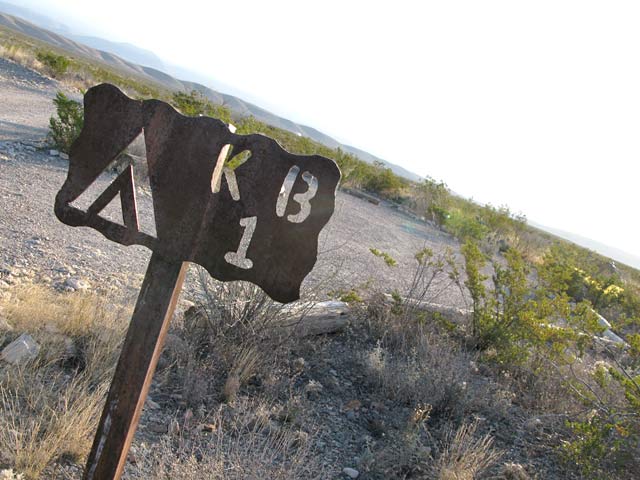
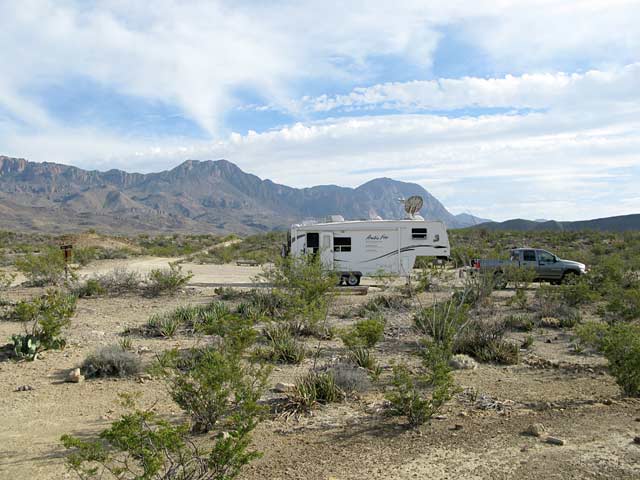
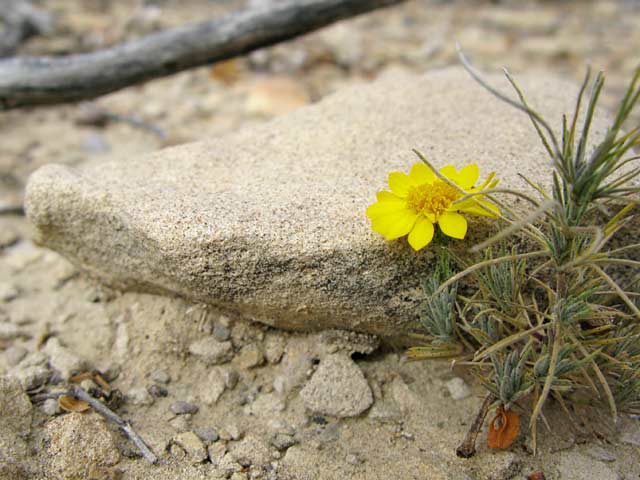
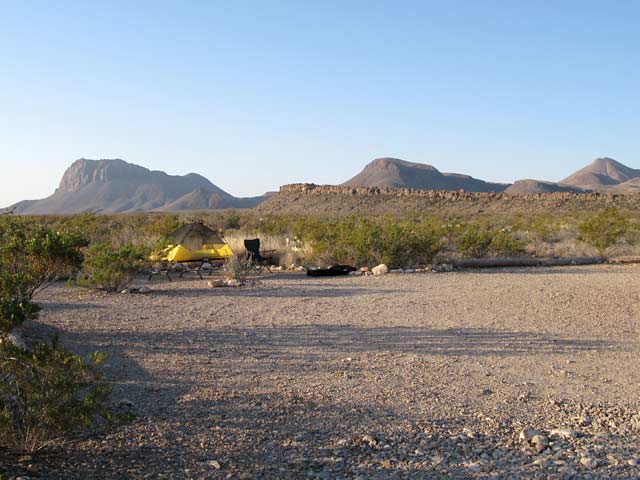
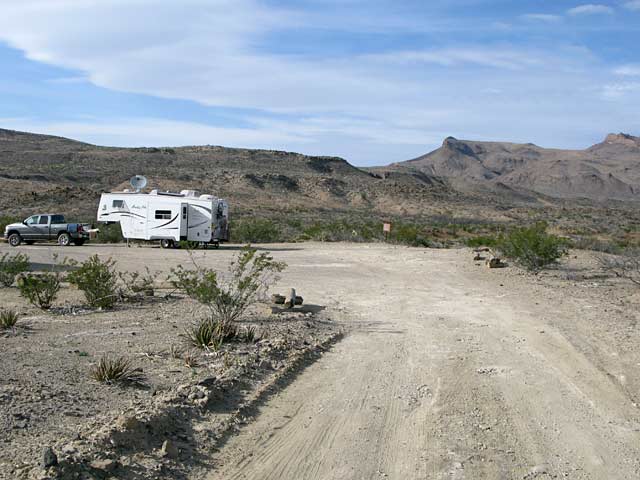

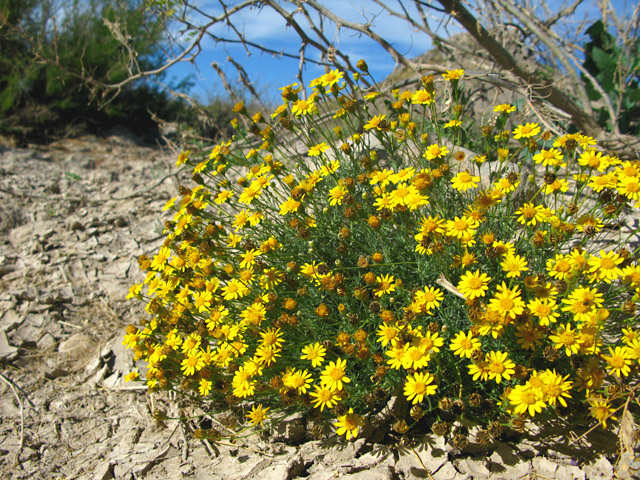
Hey Renee and Jim, we still check your blog once every month even though we sold our Arctic Fox almost 3 years ago and switched to boating so we could do the Great Loop. We’re thinking of buying another 5th wheel this Fall and interspersing RV life with boat life. So the two hilarious things (in the “small world” vein) are: we’ve been thinking we want to see Big Bend by RV (my sister did this twice this past year), AND we’ve been following Sean and Louise’s boating Great Loop blog (though we’ve never met them) because they took some boat training from the same Captains we did before we did our Loop trip. What a hoot! We had read some of their RV blog posts too. Thanks for all the details on Big Bend backcountry camping. It will certainly make our foray easier! Hugs, Cathryn and Bob
Hello you two! I can’t believe it’s been 3 years since you sold the Fox. Wow time flies. What kind of fifth wheel are you going to get? I do think the two lifestyles go hand in hand, what a great combo.
Don’t you love “coincidences”? Hah! There are none. You need to go now! Yes, DO get over to Big Bend. When you see that campsite that the Odyssey was in, you’ll be amazed they got it in there. I follow your blog so I’ll be waiting for an update with a Big Bend adventure of your own!